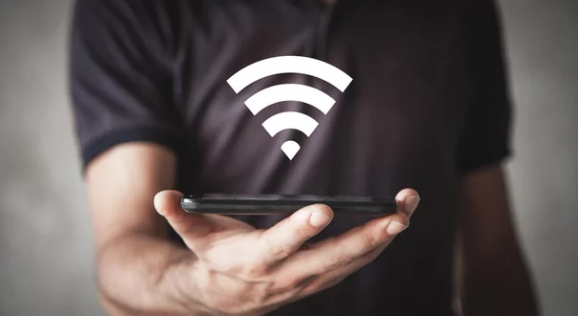A malfunctioning Wi-Fi module can make your smartphone nearly unusable. Whether your device fails to detect networks, disconnects frequently, or displays a grayed-out Wi-Fi toggle, the problem may lie in the Wi-Fi chip (IC), antenna, or associated hardware.
Knowing whether to repair or replace your Wi-Fi module can save time, money, and frustration. This guide explains the differences, signs to look for, and how to make the right decision for both iPhone and Samsung devices.
Understanding the Phone Wi-Fi Module
The Wi-Fi module is the core component that allows your phone to connect to wireless networks. It consists of:
- Wi-Fi IC (Integrated Circuit) – The microchip responsible for processing wireless signals.
- Wi-Fi Antenna – The component that transmits and receives signals from routers.
- Software/Firmware – Controls communication between the chip and your phone’s operating system.
Damage or failure in any of these components can cause Wi-Fi issues, ranging from weak signals to complete loss of connectivity.
Common Signs of Wi-Fi Module Failure
Identifying the nature of the problem helps determine if repair or replacement is the best solution.
| Symptom | Likely Cause | Repair vs Replacement |
|---|---|---|
| Wi-Fi toggle grayed out | IC failure | Repair or replace IC |
| No networks detected | Antenna or IC issue | Repair connector, replace component |
| Weak signal | Damaged antenna | Repair antenna |
| Intermittent Wi-Fi | Loose connections | Re-seat or repair antenna/IC |
| Wi-Fi only works after reboot | Overheating IC | Reflow IC or replace |
Step 1: Perform Software and Network Checks
Before assuming hardware failure, rule out software problems.
- Restart Your Device: Clears temporary network errors.
- Reset Network Settings:
- Android: Settings → General Management → Reset → Reset Network Settings
- iPhone: Settings → General → Transfer or Reset iPhone → Reset → Reset Network Settings
- Update Firmware: Install the latest OS updates to fix Wi-Fi driver issues.
If Wi-Fi still fails after these steps, the issue is likely hardware-related.
Step 2: Determine If Repair Is Viable
Repairing the Wi-Fi module can be cost-effective if the damage is localized.
When Repair Makes Sense
- The antenna is loose or disconnected.
- The Wi-Fi IC has heat-related solder cracks (reflow or reballing can restore function).
- Only specific functions are affected (e.g., weak Wi-Fi, but Bluetooth still works).
DIY vs Professional Repair
- DIY: Re-seating antennas, cleaning connectors, and cooling the device temporarily.
- Professional: Microsoldering, reflowing, or replacing ICs for permanent repair.
Repairing is generally faster and cheaper than replacement if the motherboard is intact.
Step 3: When Replacement Is the Better Option
Replacing the Wi-Fi module—or even the motherboard—may be necessary when damage is extensive.
Signs You Need Replacement
- Wi-Fi IC is physically damaged or burnt.
- Antenna is corroded or broken beyond repair.
- Multiple hardware components are failing simultaneously (Wi-Fi + Bluetooth + cellular).
- DIY or professional repair has failed repeatedly.
Replacement Considerations
- iPhone: Often requires motherboard-level replacement if the IC is damaged.
- Samsung: Some models allow antenna or chip replacement, but older devices may benefit from full board replacement.
- Cost vs. device value: For older devices, replacement may be more economical.
Step 4: Temporary Workarounds
If immediate repair or replacement isn’t possible, you can maintain connectivity using:
- Mobile Data: LTE or 5G provides internet access.
- USB Tethering: Share data with a computer.
- Bluetooth Tethering or Hotspot: Connect through another device temporarily.
These solutions are not permanent but allow continued use while planning repairs or replacements.
Step 5: Prevent Future Wi-Fi Module Failures
After repairing or replacing your Wi-Fi module, take steps to extend its life:
- Avoid drops and physical impacts.
- Keep the device dry; moisture corrodes connectors and ICs.
- Avoid overheating; don’t run heavy apps while charging.
- Use certified chargers to prevent voltage spikes.
- Keep software updated for stable Wi-Fi driver performance.
Step 6: Making the Decision: Repair vs Replacement
| Criteria | Repair | Replacement |
|---|---|---|
| Cost | Usually lower | Higher, especially motherboard-level |
| Complexity | Moderate to high (microsoldering needed) | Moderate (depends on model) |
| Success Rate | High for localized issues | High for severe IC or antenna damage |
| Device Age | Works best on newer devices | May be better for older devices with multiple failures |
| Warranty Impact | Minimal if done professionally | Replacement may maintain warranty if OEM parts used |
Final Thoughts
Knowing when to repair vs. replace your Wi-Fi module can save both money and frustration.
- Repair is ideal for loose antennas, heat-damaged chips, or minor IC issues.
- Replacement is necessary when the Wi-Fi IC or antenna is physically damaged or when repairs fail.
For both iPhone and Samsung, professional diagnosis ensures the right choice. Acting early and following proper repair or replacement protocols ensures reliable Wi-Fi connectivity for years to come.
Also Read :
